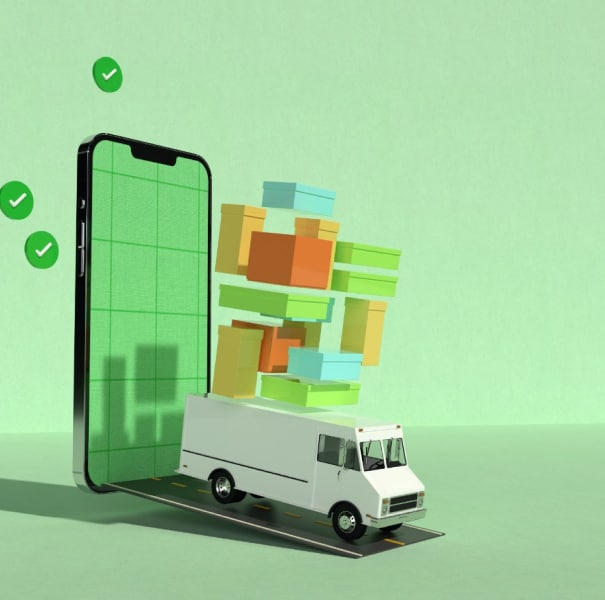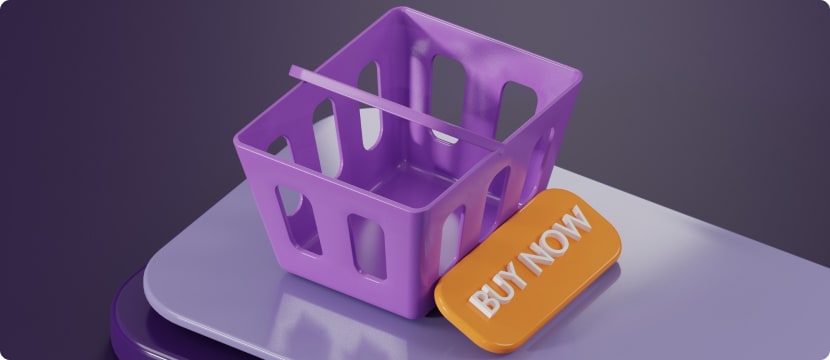

In the dynamic and fiercely competitive world of business today, retailers are continuously searching for innovative methods to enhance their operations and provide exceptional value to their clientele. The emergence of Quick Commerce is poised to revolutionize the retail landscape. However, numerous challenges need to be addressed. Rapid service costs require innovative logistics, technology, and supply chain optimisation through real-time information. Read the article to know how technology can help better the entire customer experience.
One area that has garnered significant attention is last-mile delivery, which refers to the final phase of the supply chain wherein products are transported from fulfilment centres or stores directly to customers’ doorsteps.
The advent of quick commerce and the escalating customer demand for prompt and hassle-free delivery have compelled companies to reconsider their strategies and embrace a connected ecosystem of various technologies. As per Verified Market Research1, the Last Mile Delivery Software Market achieved a valuation of USD 7 billion in 2021. By 2030, this market will soar to USD 16 billion with an impressive compound annual growth rate (CAGR) of 9.3% between 2023 and 2030.
In today’s era of booming online shopping, it empowers businesses with greater control over their operations while increasing speed and affordability to meet ever-growing customer expectations. As a result, companies are increasingly adopting these automated solutions to improve productivity, reduce costs, and optimize routing strategies for maximum efficiency.

The rapid growth of quick commerce can be attributed to the expansion of e-commerce into the grocery sector, further fuelled by shifts in consumer behaviour caused by the pandemic. This transition from purchasing lifestyle items online to ordering groceries led to the emergence of quick 10-20 minute delivery services, commonly known as q-commerce. In India, the market is abuzz with an increasing number of quick commerce companies, including those operating in the food aggregation and cab service sectors. In 2020 alone, Indian quick-commerce reached a staggering $49 billion.
Quick commerce, characterized by real-time order fulfilment, incurs considerable expenses. Unlike the multi-day model of traditional e-commerce, hyperlocal quick commerce requires multiple fulfilment centers across cities, leading to increased costs in manpower, resources, and maintenance. Furthermore, quick commerce experiences lower average transaction values compared to traditional e-commerce. Frequent purchases with lower monetary value strain profit margins and necessitate innovative approaches to cost reduction and improving efficiency in the last-mile delivery process.

Several innovative strategies and technologies have emerged to address the challenges faced by quick commerce companies. Let’s explore some of these innovations reshaping the last mile delivery landscape.
Quick commerce’s success relies heavily on analysing various metrics, such as order count, value, repeats, and expenses per delivery. To achieve this success, a prominent player in the Indian quick commerce industry has implemented three innovative strategies that have transformed their operations.
1. Focused delivery hours by limiting morning deliveries:
This approach has allowed them to reduce staffing and transportation costs while eliminating the need for multiple centers.
2. Strategically positioned next-morning delivery as an exclusive perk:
They are optimizing their routes more effectively while managing customer expectations. This strategy has proven effective in reducing costs.
3. Doorstep milk delivery introduced as an entry point for customers:
This personalized service helps build rapport with customers and encourages them to place more orders while increasing the average order value.
These strategic shifts contribute to increased order value and result in better control over last-mile delivery costs – a significant expense for these businesses.
Efficient management of warehouses plays a vital role in the operations of these companies that handle large quantities of diverse products. Unlike traditional e-commerce, These companies focus on managing fragile and perishable goods requiring precise and quick handling. Any incomplete or damaged shipments can result in customer dissatisfaction and negatively impact future orders.
Businesses can automate inventory tracking by implementing a robust warehouse system while synchronizing real-time product availability with customer applications. This seamless automation streamlines processes reduces errors, and enhances overall efficiency – ultimately leading to an improved customer experience.
To address the increasing need for efficient last mile delivery, businesses are exploring drone solutions to overcome traffic, sustainability, and traditional constraints. One key obstacle in this endeavour is route planning.
However, innovation has led to the development of an algorithm known as the “Travelling salesman problem for Unmanned Aerial Vehicles” or “TSP for UAV”, which optimizes routes specifically for drones. When it comes to quick commerce, two primary strategies involving drones have emerged:
1. Flying Sidekick TSP (FSTSP)
involves using ground vehicles for route optimization followed by drone deliveries. The aim is to reduce both costs and delivery time.
2. Parallel Drone Scheduling TSP (PDSTSP)
involves trucks and drones working autonomously to optimize routes and enhance efficiency. This approach provides a glimpse into the future of logistics driven by technology.
These advancements in drone technology hold great promise for revolutionizing last mile delivery operations and paving the way towards a more streamlined and tech-savvy logistics industry.
Loved what you read?
Get practical thought leadership articles on AI and Automation delivered to your inbox


Loved what you read?
Get practical thought leadership articles on AI and Automation delivered to your inbox
To overcome the challenges faced in the final stage of delivery, businesses must adopt a connected enterprise approach that brings together people, processes, technology, and systems to form value networks. This approach not only improves efficiency but also stimulates innovation and future-proofs organizations. Implementing this model goes beyond breaking down silos; it involves optimizing operations and strategically integrating technology.
1. By implementing a unified order management system that provides a comprehensive overview of inventory and integrates with warehousing and logistics processes, businesses can achieve an end-to-end solution that enhances efficiency and customer satisfaction.
2. A connected enterprise also enables organizations to gain valuable insights into customer behavior, empowering them to make data-driven decisions while delivering personalized experiences and fostering innovation.
3. The impact of last mile delivery on customer experience and the success of quick commerce drives the adoption of a connected enterprise. By embracing this approach, businesses can significantly reduce costs, improve operational efficiency, and deliver exceptional customer value.
The impact of last mile delivery on customer experience and the success of quick commerce drives the adoption of a connected enterprise. By embracing this approach, businesses can significantly reduce costs, improve operational efficiency, and deliver exceptional customer value.
Disclaimer Any opinions, findings, and conclusions or recommendations expressed in this material are those of the author(s) and do not necessarily reflect the views of the respective institutions or funding agencies




